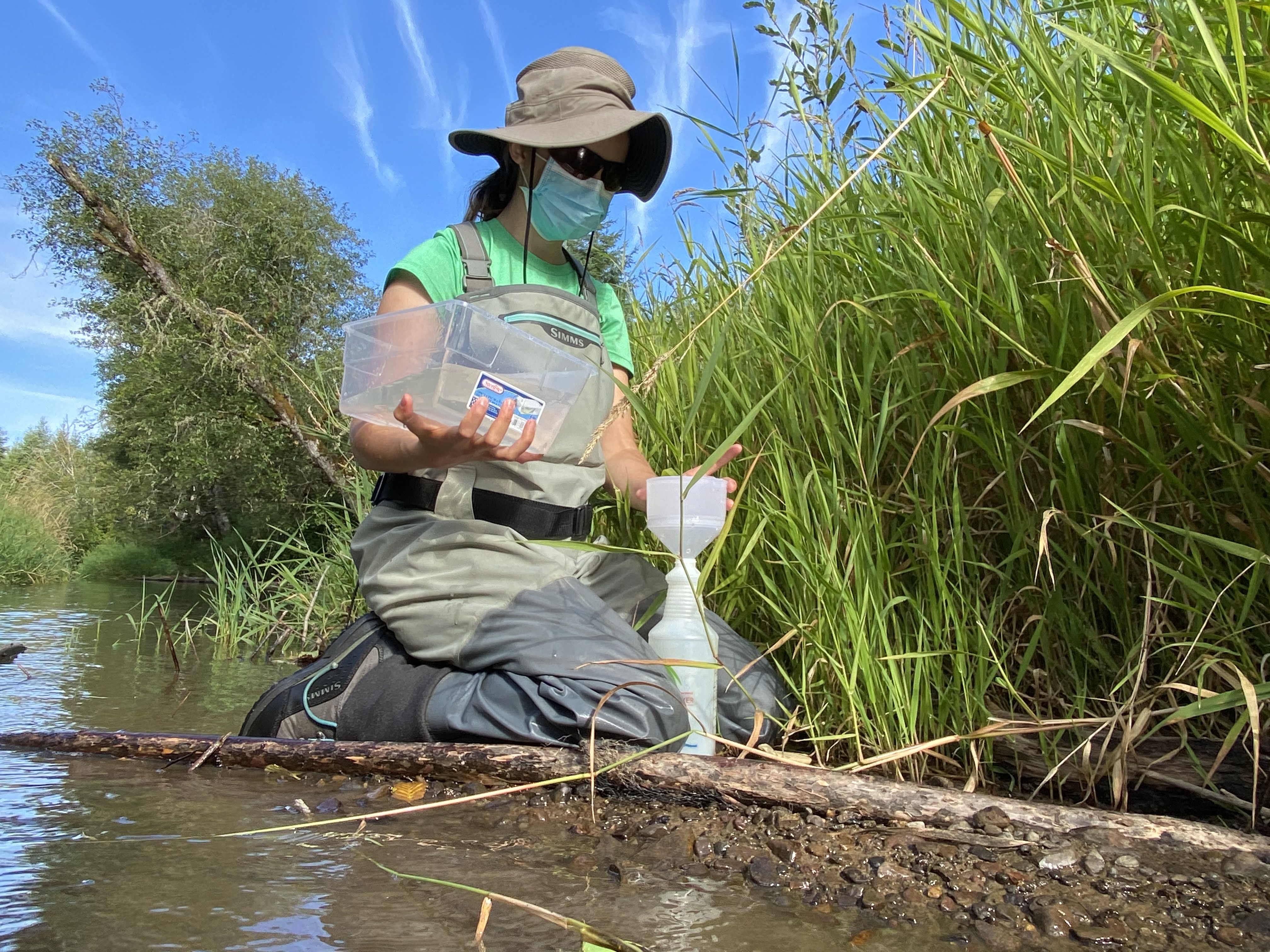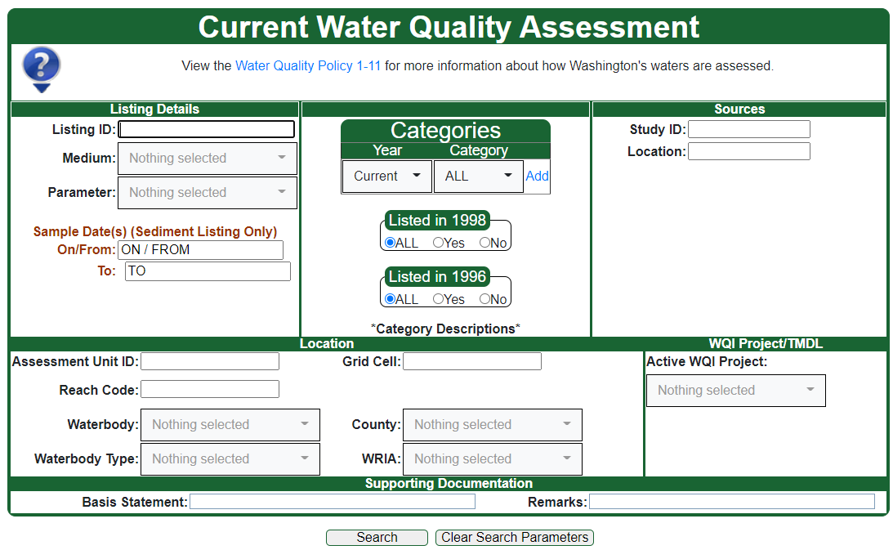Water quality assessment & 303(d) list
The federal Clean Water Act requires states to perform a water quality assessment every two years to track how clean the rivers, lakes, and marine water bodies are. We place assessed water bodies in categories that describe the quality of the water and status of any needed cleanup. The assessment helps us use state resources more efficiently by focusing our limited resources on water bodies that need the most work.
2022 Water Quality Assessment call for data complete
We completed our 2022 Water Quality Assessment call for data on Sept. 30, 2022. The next step is to compile and assess water quality data from Washington’s rivers, streams, lakes, and marine waters. Under the guidance of Policy 1-11, we will evaluate the data and determine where Washington’s waters designated uses are impaired. We anticipate having a draft list of impaired waters for review in early 2024.
2018 Water Quality Assessment approved by EPA
On Aug. 26, 2022, the Environmental Protection Agency (EPA) Region 10 issued their final approval of our 2018 Water Quality Assessment. The new assessment serves as our most current information on fresh and marine water quality health and replaces our previous assessment for Clean Water Act regulatory purposes. Decisions relying on assessment information should use the new assessment results. Visit EPA's Washington 2014–2018 303d List website for more information on their decision.
View the most current assessment results on our online search tool or our map-based Water Quality Atlas.
Supporting documents
- EPA approval letter
- Supporting information for the 2018 Water Quality Assessment publication
- See Appendix A for Sediment Category 4B cleanup sites
- Response to comments
- Focus On: Water Quality Assessment (August 2022)
What is the Water Quality Assessment?
The water quality assessment (WQA) is our process of collecting data and assessing the quality of surface water in the state. This includes all rivers, lakes, and marine water. You can view the results of the assessment in our online search tool or our mapping tool, the Water Quality Atlas.
The federal Clean Water Act requires that all states restore their water bodies to be “fishable and swimmable.” Section 303(d) of the Clean Water Act establishes a process to identify and clean up polluted water. Those waters we determine to be impaired are placed on the “303(d) list” and are prioritized for future clean up.
What is the Water Quality Atlas?
We have a mapping tool called the Water Quality Atlas. The Water Quality Atlas is an interactive search and mapping tool that includes additional layers of information in an easy-to-use mapping application.
Users can map the water quality assessment category results, view water quality standards for a location, identify areas addressed by Total Maximum Daily Loads (TMDLs), and see permitted wastewater discharge outfalls.
The process to update the Water Quality Assessment
The following timeline provides information on each step of the 2022 assessment cycle. We previously developed a large data automation tool that allows us to speed up many pieces of the assessment process. Automating our data review and analysis should now allow us to meet our requirement for submittal every two years.
The opportunity for early tribal review of the assessment is part of a 1997 cooperative agreement between Tribes, Ecology, and EPA that recognizes the government-to-government relationship between Washington and Tribes in managing water quality.

How are water bodies assessed?
We compile our own water quality data, and invite other groups to submit water quality data they have collected. We only assess data that meets high quality assurance and credible data requirements. Our goal is to accurately determine if water bodies are polluted based on the best available data.
The assessed water bodies are placed into one of five categories that describe the water quality. Once the assessment is complete, we provide the public a chance to review and give comments. We submit the final assessment to the Environmental Protection Agency for approval of the category 5 listings, also called the 303(d) list.
Assessment categories
303(d) list
Water bodies whose designated uses (such as for drinking, recreation, aquatic habitat, and industrial use) that are impaired by pollutants are identified in the water quality assessment as "Category 5: Polluted water that requires a water improvement project." The 303(d) list, so called because the process is described in Section 303(d) of the Clean Water Act, lists water bodies in the polluted water category.
Federal laws, state water quality standards, and water quality assessment policy 1-11 guide our assessment of which water bodies to place on the 303(d) list.
To view the list, go to the water quality assessment database and select Category 5 (under Categories).
What happens to polluted water bodies?
If water bodies are polluted, we develop a water cleanup plan, also called a Total Maximum Daily Load or TMDL, to reduce pollution sources throughout the surrounding watershed. After pollutant controls are in place, we monitor in the watershed to see if the water meets state water quality standards.
Related links
Contact information
Justin Donahue
Water Quality Assessment Scientist
303d@ecy.wa.gov
360-628-3630


